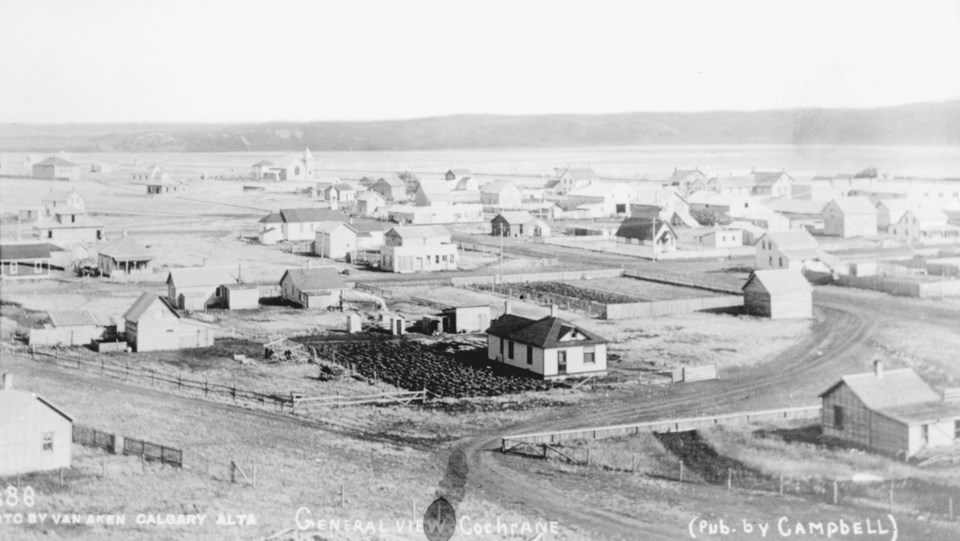The history of Cochrane and area is filled with the expected and the unexpected, and it will all come to life courtesy of the Cochrane Historical & Archival Preservation Society (CHAPS) on June 1.
Gordon Davies of CHAPs will deliver the talk, which will really be about Cochrane and area, because a lot of the hidden history took place before Cochrane started to become a real town.
When land became available for lease or sale in the late 1800s and early 1900s the dreamers and ranchers came (mostly from Britain) and the optimism of the early 20th century rubbed off on the area, sparking the eventual development of the Town of Cochrane.
But it didn’t happen in lockstep with other infrastructure growth that commonly accompanied rapid growth in the rest of the continent.
In other parts of the country, when the railroad arrived, it heralded a boom and the settlers followed, bringing economic development.
When the Canadian Pacific Railroad arrived in 1883, Cochrane didn’t develop as expected, as the common knowledge of the time was that nearby Mitford would be the centre of activity.
That’s because Tom Cochrane and his wife Lady Adela moved to the area in 1886 and built a sawmill in Mitford. Lumber from the mill was used to build the All Saints Anglican Church, but when the Cochranes moved back to England in 1896, and Mitford was abandoned in 1898, the decision was made to move the church to Cochrane.
In those days, travellers on the main road into Cochrane could have been stopped by a herd of pigs grunting their way down the hill, keeping alive the traditional mode of transport the Glenbow farmer brought with him from Ireland – the road belongs to the four-leggers as well, after all.
Tom Cochrane was no relation to Senator Matthew Henry Cochrane, the man who established the Cochrane Ranche in 1881. The Canadian Pacific Railway named the Town of Cochrane after the senator. Few people made the town their home at first, despite the presence of the surrounding ranching population.
At that time the Canadian Pacific Railway (CPR) stopped in Mitford, so it developed into a fairly large community, with a post office and a store. Cochrane meanwhile was merely a townsite, with nothing on it.
The success of the Cochranes’ sawmill in Mitford was limited. Most of the good quality fir to be found in the area was never sold, instead being used to construct a railway designed to transport the lumber to market.
Although the CPR approached the mill from the east, tension built between Cochrane and the railway, as the engineers did not like stopping at the mill due to the steep grades nearby.
In 1888, a coal mine began operation in the area, with the distinct advantage of having the sawmill's railway nearby to transport the coal to market.
In an effort to save the town, Cochrane established a brickyard using material found just north of Mitford. Three years later, that operation was also closed, due to the inferior quality of its product.
The writing was on the wall for the Cochranes’ little dream town.
By 1890, it became obvious that both operations were doomed to fail and the Cochranes abandoned Mitford and returned to England.
After the closing of the brickyard, the town fell into decline before it was abandoned in 1898. What was left of the townsfolk moved into Cochrane.
Mitford is now a ghost town, while Cochrane is Alberta’s fastest growing community, with a population north of 34,000 residents.
The talk, titled, "To see where you're going, it helps to see where you've been," will be at 7 pm on June 1 at the Frank Wills Memorial Hall.
Admission is free.



